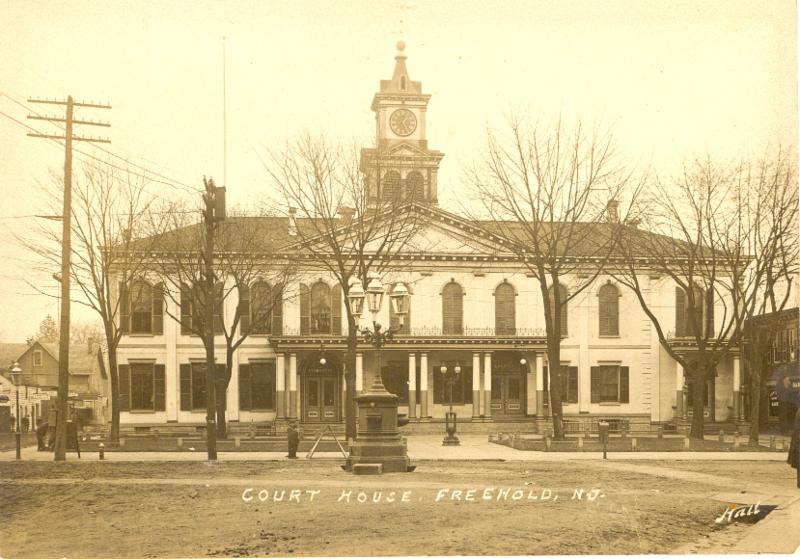Loading...
The Battle of Monmouth happened near Monmouth Courthouse (Freehold Borough, New Jersey today) on June 28, 1778, during the American Revolutionary War.
Monmouth Courthouse
- In April 1778, Howe received word that his resignation was accepted. He left in May. Henry Clinton replaced him as commander of all British forces in North America.
- Clinton mini-bio: Clinton’s father was a British admiral who became Governor of New York, where he and the young Henry moved in 1743 when Clinton was 13. He lived in NY until he was 19. He became an army officer in 1746. He fought in Germany during the Seven Years’ War. There he met Charles Lee, William Alexander (“Lord Stirling”), and Charles Cornwallis. By 1772 he had risen to the rank of Major General. He came to Boston in 1775 along with William Howe and John Burgoyne.
- Clinton was ordered to leave Philadelphia and return to New York, which was considered a safer place to be (particularly with the French fleet on its way to North America). 1500 Loyalist families in Philadelphia decided to flee with the British army
- Word that the British were planning to leave reached Washington at Valley Forge as early as May. Benedict Arnold and Charles Lee (who had been a British prisoner for 18 months and had even given advice to the British!) arrived that month.
- On June 12, Clinton marched the army across the Delaware River and across New Jersey. Lee advised Washington not to pursue Clinton’s army. Washington decided to hit Clinton’s rear guard anyway, and he put Lee in charge of the operation.
- The attack force caught up with the British (under Cornwallis) near Monmouth Courthouse on June 28. Lee sent Anthony Wayne with part of the army to attack the tail of the army, while he led the rest around Cornwallis’ flank to try to cut them off.
- Lee discovered that Cornwallis had many more soldiers than he had thought. Cornwallis turned the army around and attacked. Lee and the Americans retreated.
- Washington, riding forward, ran into Lee retreating. “What does this mean, sir? Give me instantly an explanation of this retreat!” Lee simply stammered “Sir? Sir?” Washington demanded, “Why are you retreating?” Lee replied, “Because the contradictory reports brought about a confusion that I could not control!” He also said that he had advised against it. Washington told Lee he should not have taken the command if he did not believe in the attack.
- Washington took personal command of the army and deployed it in a strong defensive position. Clinton and Cornwallis counterattacked, but the Americans did not give way. The British fell back.
- The legend of “Molly Pitcher” arose from this battle. Her real name was Mary Ludwig Hayes, a camp follower whose job was to bring water to artillerymen but who in this battle helped fire a cannon.
- Many men on both sides died of heat stroke or exhaustion (the temperature was near 100 degrees).
- Although the battle was technically a loss, the Americans fought very well. Washington claimed it as a victory, although the British got away.
- Lee was court-martialed and found guilty of incompetence, disobedience, and insolence.
- Casualties: Americans: 400-500, British: 230-1000 (unsure)
Aftermath of Monmouth Courthouse
- The British army reached New York in early July. Washington reached the outskirts of NYC on July 6.
- For the next three years, the Continental Army occupied several forts around NYC, which was essentially under siege.
- Washington would fight no major battles for the next three years. There were only a few minor engagements during that time. The northern war was a stalemate.
- For his conduct at Monmouth Courthouse, Charles Lee was court-martialed and suspended for a year.
Additional Resources About Revolution and Colonies
Cite This Article
"Monmouth Courthouse: Battle of Monmouth (1778)" History on the Net© 2000-2024, Salem Media.
April 29, 2024 <https://www.historyonthenet.com/monmouth-courthouse>
More Citation Information.







